Art Fairs
The Homeless Man in the Driveway Is a Brilliant Artist? How Three Stars of the Outsider Art Fair Were Discovered
Most gallerists discover new artists at MFA graduate exhibitions. These dealers traveled much further afield.
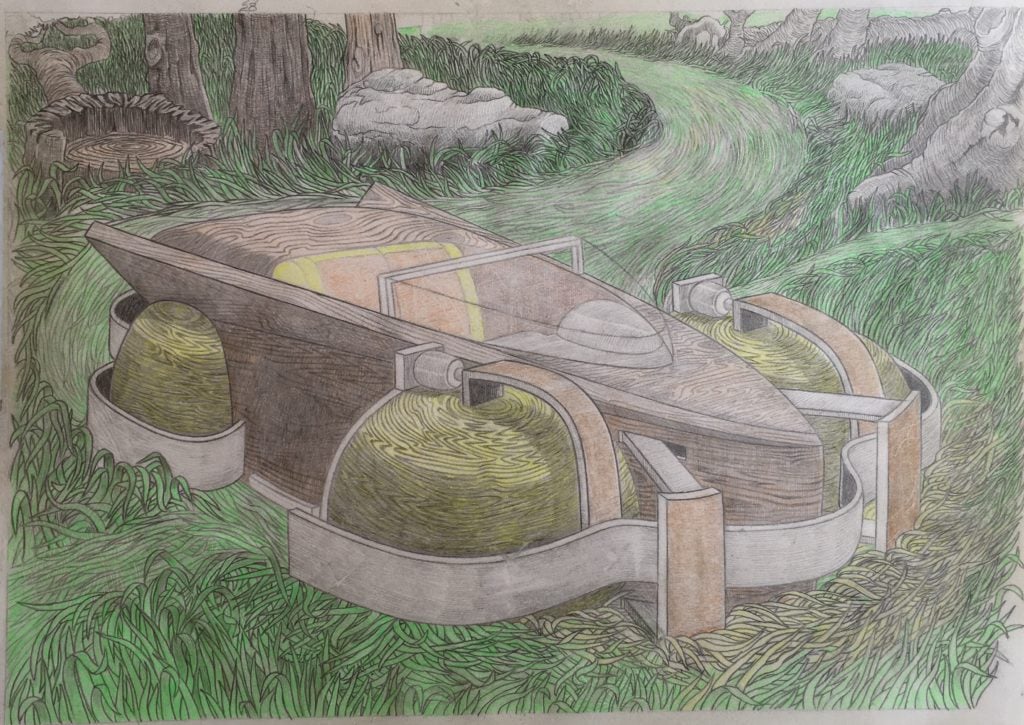
Most gallerists discover new artists at MFA graduate exhibitions. These dealers traveled much further afield.

Brian Boucher

Every year, the New York art world gets a much-needed reminder that exciting art does not need to come out of a well-lit Brooklyn studio—it can also be found in the trunk of a car, the attic of a Sunday painter, or a psychiatric hospital.
At a time when museums and galleries are increasingly questioning the definition of “outsider” and “insider,” the 2018 edition of the Outsider Art Fair—which opened to the public at Manhattan’s Metropolitan Pavilion yesterday—remains beloved. It is a reliable source of memorable art, often at modest prices and accompanied by surprising backstories.
Indeed, outsider artists rarely take traditional career paths. Often, they develop their craft far away from art-world centers and pricey MFA programs. And usually, the way that dealers encounter the artists they show is equally nontraditional.
Here are our picks of three artists with outstanding work at this year’s Outsider Art Fair, and the unlikely ways that each dealer and artist came together.
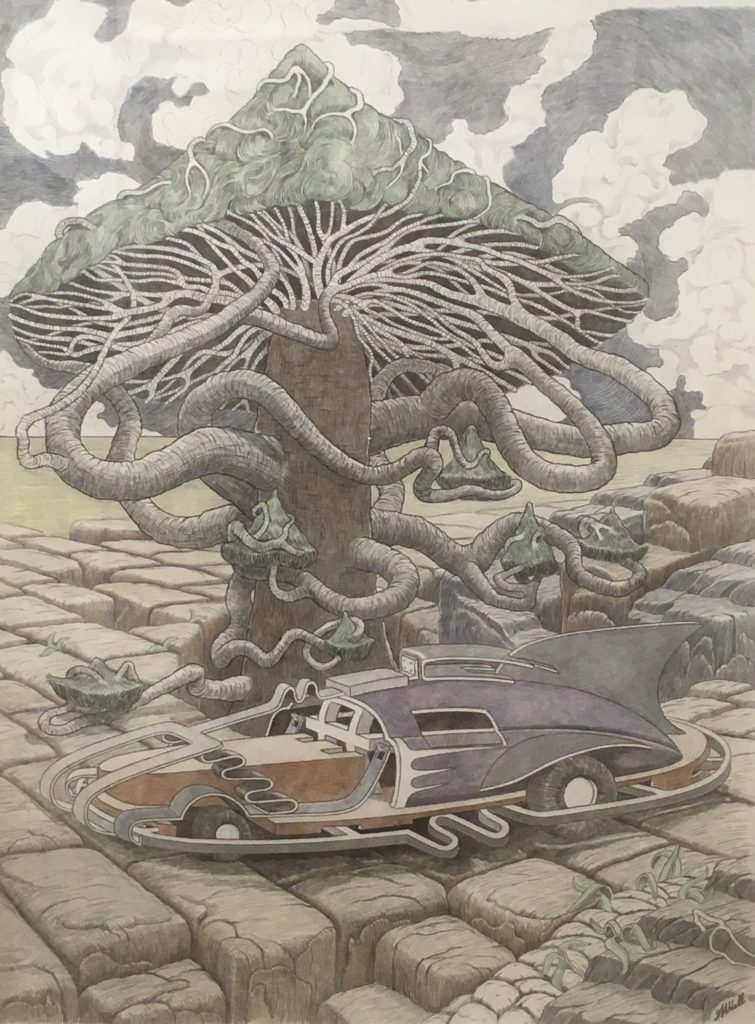
William A. Hall’s Mount Pinecurving (2017). Courtesy of Henry Boxer.
Visionary artist William A. Hall was homeless for almost two decades, more than half of which he spent living in his car. By a stroke of good fortune, a few years ago he happened to park in the driveway of a Los Angeles art teacher. The man struck up a conversation with Hall after spying his beautiful, elaborate drawings through the car window. Hall created the drawings of cars in fantastically conceived natural settings as he leaned on the steering wheel.
Hall eventually opened his trunk to reveal a treasure trove of hundreds more drawings, all done on letter-sized sheets of paper. They show cars at once retro and futuristic, often with burly exterior structures to protect them from collisions. Hall’s niece died in a car crash, which lends these fantasy buttresses great pathos.
Fortuitously for Hall, the art teacher was an acquaintance of Henry Boxer, the Outsider art dealer with a gallery in Surrey, England. (Boxer has a great eye; I was stunned by the stained-glass works of Pinkie Maclure in his booth at last year’s fair.)
Now properly set up in a more comfortable environment, Hall is no longer confined to letter-sized sheets and is able to work on a more ambitious scale. His drawings go for anywhere from $3,000 to $8,500.
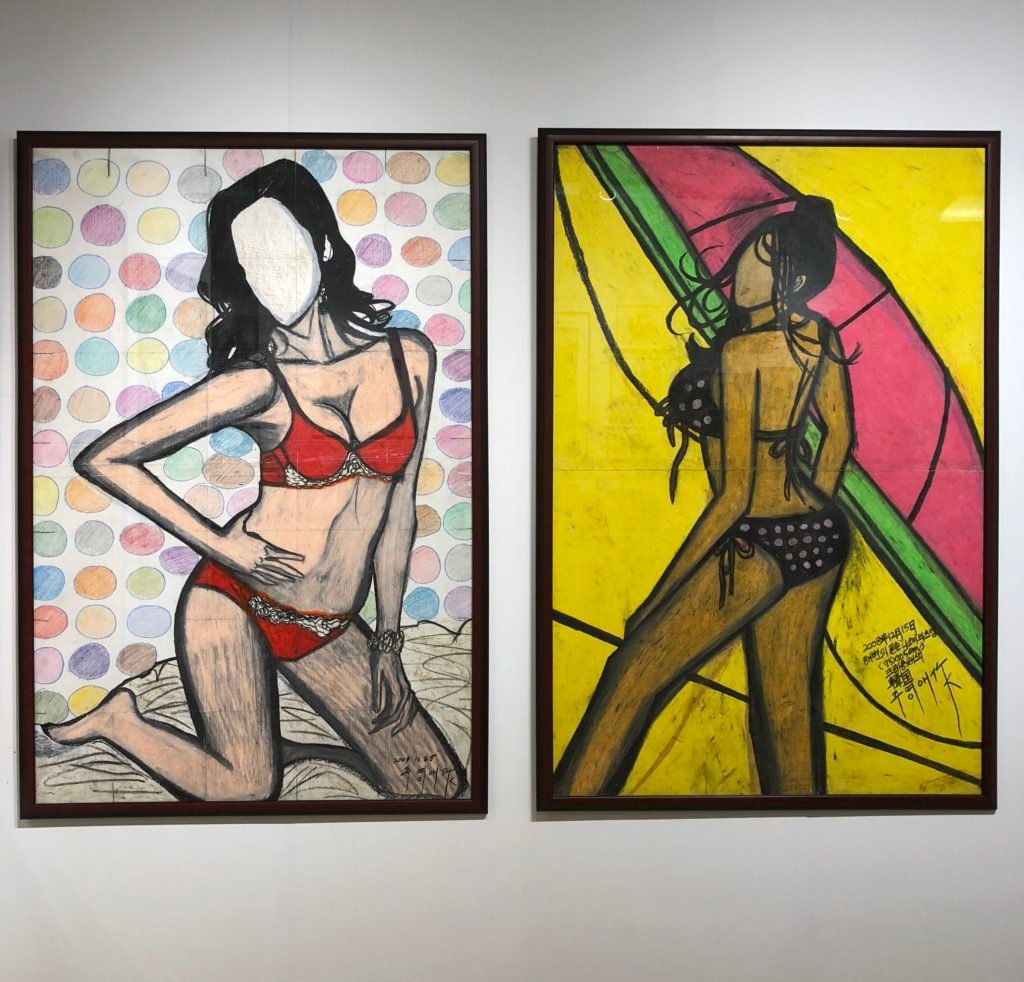
Young Ae Joo’s works on view at Korea Art Brut. Courtesy Korea Art Brut.
A South Korean collector who is showing at an art fair for the first time, Tong Won Kim has a day job as a professor of social work in Seoul. When he was working at Fountain House, a New York-based nonprofit that helps those with mental illnesses, he was struck by the art some of the clients created.
In his home country, he says, the situation for people with mental illness is far worse than in America. So it was partly as a buyer and partly in an effort to support patients that he began to scour various mental hospitals to identify people with artistic talent.
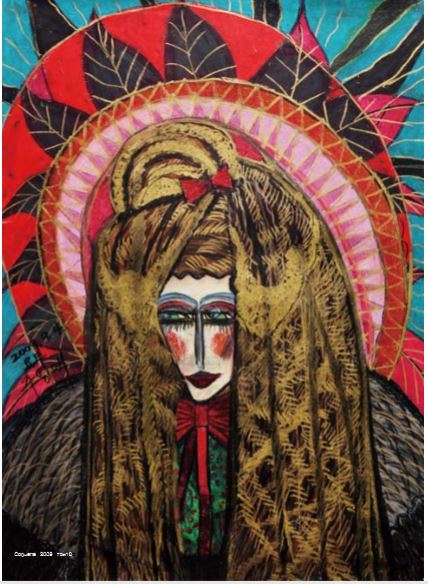
Young Ae Joo’s Coquette (2009). Courtesy Korea Art Brut.
He estimates that he visited no fewer than 50 hospitals and reviewed the creations of some 2,000 patients in order to find the work of Young Ae Joo, who was hospitalized for schizophrenia, in 2008.
Created with crayon and sometimes with lipstick, the artist’s drawings show women, sometimes nude, sometimes scantily clad, in poses that echo fashion advertisements. In one self-portrait, Coquette (2009), a dynamic halo of pink, red, black, and teal surrounds a heavily made-up face. The work speaks to the artist’s desire to overpower men, according to the dealer.
Young Ae Joo’s works range in price from $12,000 to $17,000.
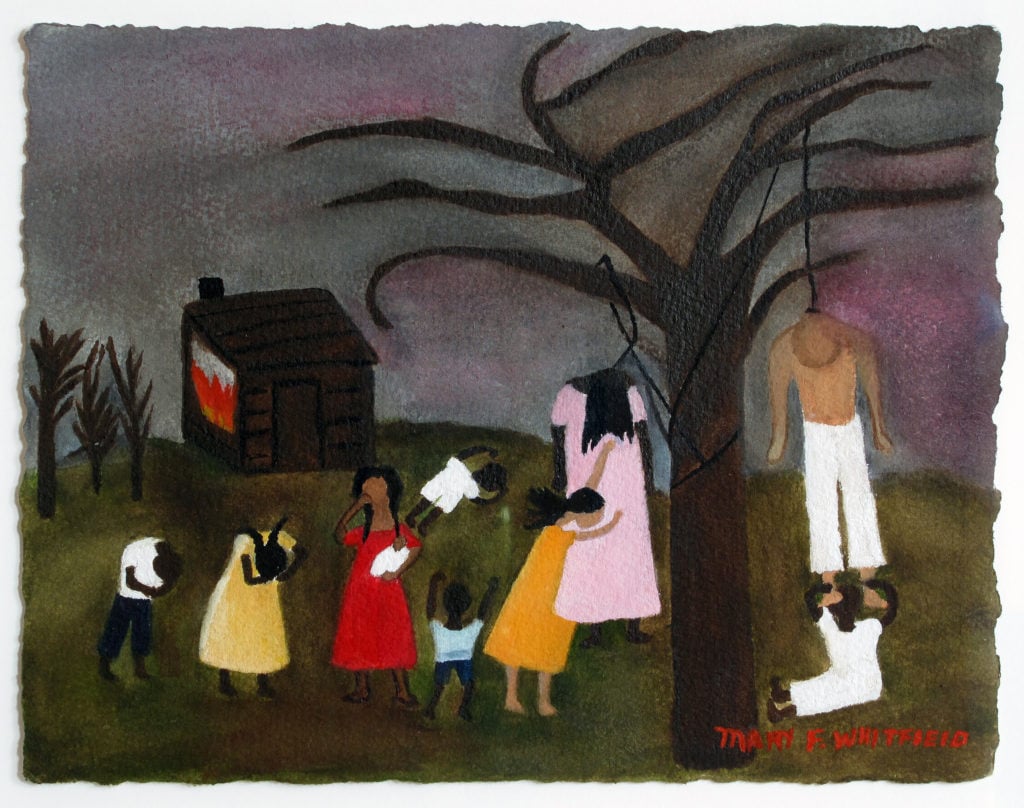
Mary F. Whitfield’s Oh Papa and Mama! (2002). Courtesy of Phyllis Stigliano.
This unlikely encounter came as the result of a hiring freeze. Starved for help and unable to expand its curatorial staff, the African American Museum of Nassau County in Long Island asked the Brooklyn dealer Phyllis Stigliano to consult on a previously scheduled show of members of the Long Island Black Artist Association.
The white curator was met with some skepticism by the black artists in the show, but Stigliano won over self-taught painter Mary F. Whitfield, who was born in 1947 in Birmingham, Alabama.
Their bond grew when Stigliano learned that the award-winning journalist Kathy Kemp was in Alabama conducting interviews with folk artists for her book Revelations. Certain that it was an important opportunity, she convinced Whitfield to go there with her. But there was a catch: Whitfield was afraid to travel by air or rail, so the curator and artist had to take a Greyhound bus through a snowstorm to get to the meeting.
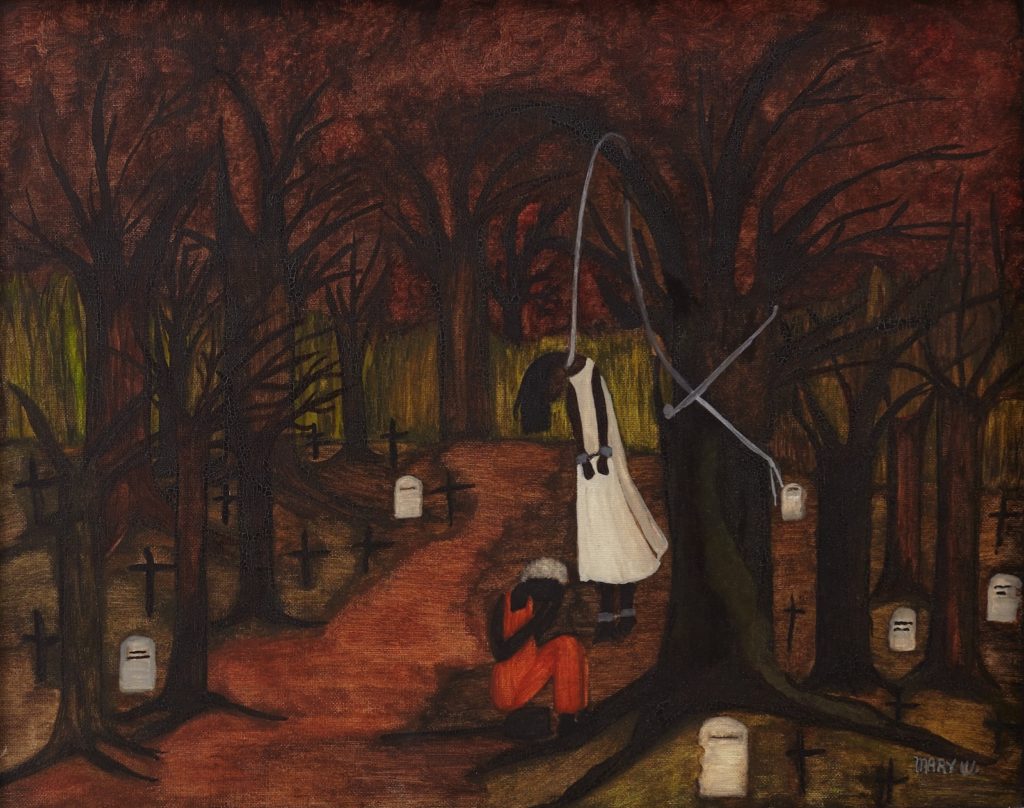
Mary F. Whitfield’s Mary (1994). Courtesy of Phyllis Stigliano Art Projects.
The trip would turn out to be formative in more ways than one. While in Alabama, the duo also visited a civil rights museum, where Whitfield saw exhibits relating to lynching. Then and there, Stigliano says, the artist resolved to represent these brutal murders in her own work.
The results are small watercolor and gouache paintings of black bodies hanging from trees that are at once heartrending and so beautifully rendered that you can’t tear your eyes away, even as you feel you can’t bear to look. In one especially punishing work, several children stand at the feet of their murdered parents. Another, Mary (1994), uses a lynching as a brutally direct metaphor for the artist’s own experiences of racism.
Whitfield’s paintings range in price from $6,000 to $20,000.
The Outsider Art Fair runs through Sunday, January 21 at the Metropolitan Pavilion, 125 West 18th Street, New York.